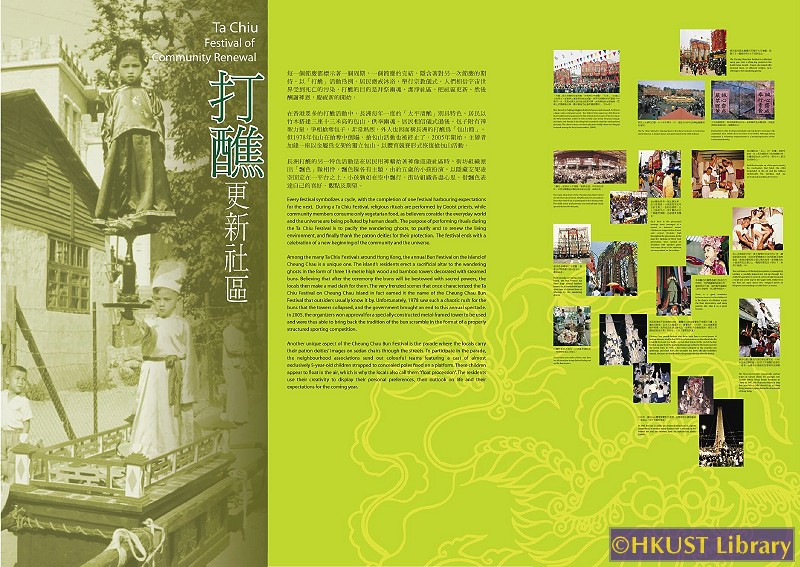Ta Chiu
Every festival symbolizes a cycle, with the completion of one festival harbouring expectations for the next. During a Ta Chiu Festival, religious rituals are performed by Daoist priests, while community members consume only vegetarian food, as believers consider the everyday world and the universe are being polluted by human death. The purpose of performing rituals during the Ta Chiu Festival is to pacify the wandering ghosts, to purify and to renew the living environment, and nally thank the patron deities for their protection. The festival ends with a celebration of a new beginning of the community and the universe.
Among the many Ta Chiu Festivals around Hong Kong, the annual Bun Festival on the island of Cheung Chau is a unique one. The island’s residents erect a sacri cial altar to the wandering ghosts in the form of three 13-metre high wood and bamboo towers decorated with steamed buns. Believing that after the ceremony the buns will be bestowed with sacred powers, the locals then make a mad dash for them. The very frenzied scenes that once characterized the Ta Chiu Festival on Cheung Chau Island in fact earned it the name of the Cheung Chau Bun Festival that outsiders usually know it by. Unfortunately, 1978 saw such a chaotic rush for the buns that the towers collapsed, and the government brought an end to this annual spectacle. In 2005, the organizers won approval for a specially constructed metal-framed tower to be used and were thus able to bring back the tradition of the bun scramble in the format of a properly structured sporting competition.
Another unique aspect of the Cheung Chau Bun Festival is the parade where the locals carry their patron deities’ images on sedan chairs through the streets. To participate in the parade, the neighbourhood associations send out colourful teams featuring a cast of almost exclusively 5-year-old children strapped to concealed poles xed on a platform. These children appear to oat in the air, which is why the locals also call them “ oat procession”. The residents use their creativity to display their personal preferences, their outlook on life and their expectations for the coming year.


